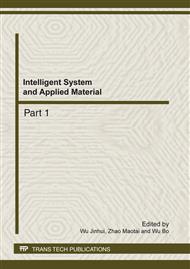p.881
p.886
p.891
p.896
p.901
p.907
p.912
p.916
p.920
A New Backstepping Sliding Control Technique for Hybrid Vehicles Engine Idle Speed Control
Abstract:
In the paper, the idle speed control problem for hybrid vehicles engine is investigated. The mathematics equations about dynamic characteristic of engine’s primary subsystems are presented in the view of the physical characters of engine. A new back stepping sliding mode controller was designed based on the simplified model of engine, and the simulation results show the great improvement of engine control performance, especially to overcome the disturbance.
Info:
Periodical:
Pages:
901-906
Citation:
Online since:
February 2012
Authors:
Keywords:
Price:
Сopyright:
© 2012 Trans Tech Publications Ltd. All Rights Reserved
Share:
Citation:


